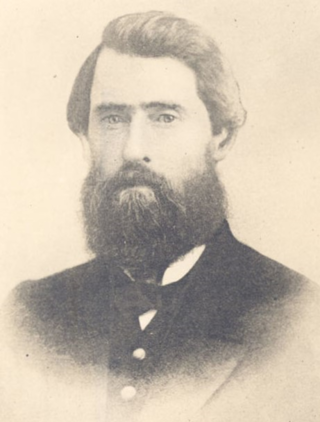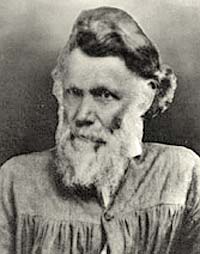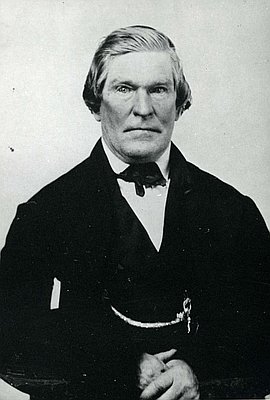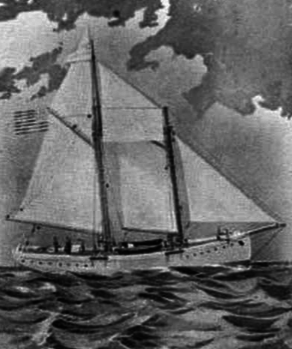Related Research Articles

Jason Lee was a Canadian Methodist Episcopalian missionary and pioneer in the Pacific Northwest. He was born on a farm near Stanstead, Quebec.

Joseph Goff Gale was an American pioneer, trapper, entrepreneur, and politician who contributed to the early settlement of the Oregon Country. There he assisted in the construction of the first sailing vessel built in what would become the state of Oregon, sailed the ship to California to trade for cattle, and later served as one of three co-executives ("governors") in the Provisional Government of Oregon. Originally a sailor, he also spent time in the fur trade, as a farmer, and a gold miner in the California Gold Rush.

Philip Foster was one of the first settlers in Oregon, United States. The farmstead he established in Eagle Creek in 1847 became a stopping post for pioneers heading west along the Oregon Trail. Approximately 10,000 emigrants are believed to have passed through. The farm was listed on the National Register of Historic Places in 1980.

The Champoeg Meetings were the first attempts at formal governance by European-American and French Canadian pioneers in the Oregon Country on the Pacific Northwest coast of North America. Between 1841 and 1843, a series of public councils was held at Champoeg, a settlement on the French Prairie of the Willamette River valley in present-day Marion County, Oregon, and at surrounding settlements. The meetings were organized by newly arrived settlers as well as Protestant missionaries from the Methodist Mission and Catholic Jesuit priests from Canada.

Oregon pioneer history (1806–1890) is the period in the history of Oregon Country and Oregon Territory, in the present day state of Oregon and Northwestern United States.
Ewing Young was an American fur trapper and trader from Tennessee who traveled in what was then the northern Mexico frontier territories of Santa Fe de Nuevo México and Alta California before settling in the Oregon Country. Young traded along the Santa Fe Trail, followed parts of the Old Spanish Trail west, and established new trails. He later moved north to the Willamette Valley. As a prominent and wealthy citizen in Oregon, his death was the impetus for the assemblies that several years later established the Provisional Government of Oregon.
The Willamette Cattle Company was formed in 1837 by pioneers in the Willamette Valley of present-day Oregon, United States. The company was formed with the express purpose of purchasing cattle in Mexican California. Nearly 750 head of cattle and 40 horses were purchased in total. Ewing Young led the overland party as they drove these animals north back to the Willamette Valley.

The Star of Oregon was a schooner sailing vessel of the mid-19th century used on the west coast of North America. It was the first American sailing ship built in what is now the U.S. state of Oregon. Pioneer settlers built the ship from 1840 to 1842 in order to sail it to California and exchange it for livestock. During World War II a Liberty ship was named the SS Star of Oregon in honor of the 19th century sailing vessel.
Loriot was an American sailing ship involved in exploration of the Pacific Northwest coast of North America. This brig took a member of a United States presidential expedition to survey land and the inhabitants of the area in the 1830s. The ship then transported members of the Willamette Cattle Company from Oregon Country to California in an effort to increase livestock in the Willamette Valley settlements.

John Minto IV was an American pioneer born in Wylam, England. He was a prominent sheep farmer in the U.S. state of Oregon and a four-time Republican representative in the state legislature. Minto also volunteered for the militia during the Cayuse War and years later helped locate Minto and Santiam passes through the Cascade Mountains east of Salem, Oregon.
William A. Slacum was an American sailor and diplomat. He served as a purser in the United States Navy and received a Presidential commission to gather information on the Oregon Country. At that time the region was under the jurisdiction of both the United States and Great Britain. Previously, Slacum served as a diplomat to Mexico.
Webley John Hauxhurst Jr. was a pioneer in Oregon Country. He helped build the first grist mill in Oregon, participated in the Willamette Cattle Company, and was a participant at the Champoeg meeting where he voted for the creation of a provisional government.
Étienne Lucier, né Lussier, was a French-Canadian fur trader active primarily in the Pacific Northwest. He was hired by John Jacob Astor's Pacific Fur Company and sent to the region to help establish Fort Astoria. Later he became a settler in the Willamette Valley. Lucier attended the Champoeg Meetings and was one of few French-Canadians or "Canadiens" to vote for the Provisional Government of Oregon, an American and Canadian civil authority for the valley. He is credited with becoming the first European descendant farmer within the modern state of Oregon.
Pleasant M. Armstrong was an American pioneer in Oregon Country in an area that would become the state of Oregon, United States. He helped build a ship that was sailed to California to exchange for cattle, and voted at the May 2, 1843, Champoeg Meeting.

Reverend Josiah Lamberson Parrish was an American missionary in the Pacific Northwest and trustee of the Oregon Institute at its founding. A native of New York, he also participated in the Champoeg Meetings that led to the formation of the Provisional Government of Oregon in 1843. Parrish was married three times and was the first breeder of pure-bred sheep in Oregon.
Albert E. "A.E." Wilson was an American pioneer and merchant in Oregon Country. Raised in the United States, he moved to what would become the U.S. state of Oregon where he operated stores, was involved in politics, and was elected as the first judge of the Provisional Government of Oregon.

George Kirby Gay was an English sailor and later settler in the Oregon Country. He was a member of the Willamette Cattle Company that brought livestock to Oregon and built the first brick house in the United States west of the Rocky Mountains. Gay also participated in the Champoeg Meetings that created a provisional government in what would become the U.S. state of Oregon.
The Peoria Party was a group of men from Peoria in the U.S. state of Illinois, who set out about May 1, 1839, with the intention to colonize the Oregon Country on behalf of the United States and to drive out the English fur-trading companies operating there. The men of the Peoria Party were among the early pioneers who used the Oregon Trail.
Felix Hathaway was an American carpenter and pioneer in what became the state of Oregon. A native of New England, he settled in the Oregon Country where he helped construct the first American-built ship in what became the state of Oregon. His home was used for the first meeting of the Provisional Legislature of Oregon in 1844.

John Turner was an American fur trapper and guide who first entered Oregon Country in 1828 and became an early resident of the Willamette Valley. Later he moved to California where he was part of the second attempt to rescue the Donner Party.
References
- ↑ "Willamette Cattle Company Agreement, 1837". Echoes of Oregon. Oregon Secretary of State. Retrieved 2007-01-23.
- 1 2 3 4 5 6 7 8 9 10 11 12 13 14 15 16 17 18 19 20 21 22 23 24 25 26 27 28 Collins, Dean (1943). Stars of Oregon. Binford & Mort. 45.
- 1 2 3 4 5 6 7 8 9 10 11 12 Dobbs, Caroline C. (1932). Men of Champoeg: A Record of the Lives of the Pioneers Who Founded the Oregon Government. Metropolitan Press. pp. 136–141.
- 1 2 3 4 5 A Pamphlet Relating to the Claim of Senor Don Jose Y. Limantour to Four Leagues of Land in the County Adjoining and Near the City of San Francisco, California. Whitten, Towne and Company. 1853.